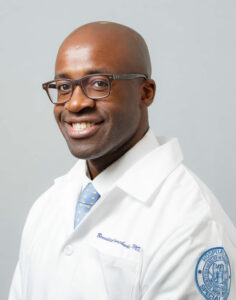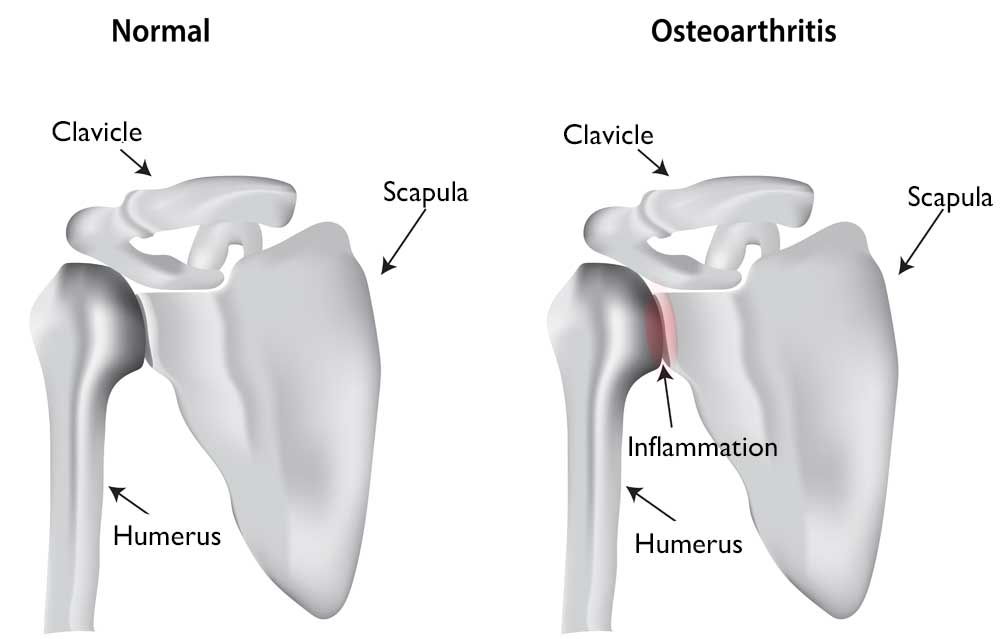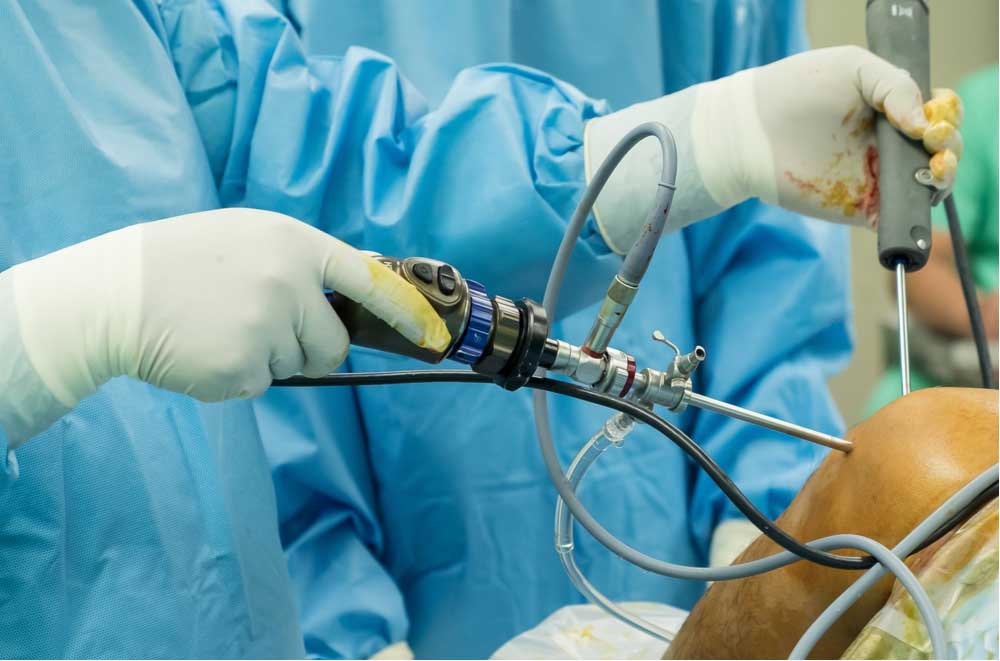Shoulder Arthritis Specialist

Are you experiencing mild to severe shoulder pain that typically worsens with activity? If so, you may have shoulder arthritis. Arthritis of the shoulder is typically found in middle-aged adults and the older population due to the natural aging process. Shoulder arthritis specialist, Doctor Benedict Nwachukwu provides diagnosis as well as surgical and nonsurgical treatment options for patients in Manhattan, New York City, NY who have developed shoulder arthritis. Contact Dr. Nwachukwu’s team today!
What is shoulder arthritis?
Arthritis occurs anytime there is bone-on-bone movement or the loss of the cushioning cartilage between the bones. Literally meaning “inflamed joint” over 50 million people in the United States alone have been diagnosed with some form of arthritis. The shoulder is the third most common joint in the human body affected by arthritis, right behind the knee, which is the most common and the hip, which is second most common. Shoulder arthritis causes chronic pain, joint damage and in some cases, loss of movement. Orthopedic shoulder specialist, Benedict Nwachukwu, MD, is dedicated to helping patients in Manhattan, New York City and the surrounding New York boroughs with shoulder arthritis return to their active and pain-free lifestyle.

Are there different kind of shoulder arthritis?
Shoulder arthritis can occur at any age and in any joint of the body. Shoulder arthritis is classified into the following types:
Post-traumatic Arthritis: This form of shoulder arthritis develops after an injury to the shoulder joint. Prior shoulder dislocations or other trauma can cause damage to the surface of the cartilage, leading to wear. Mechanical or even a chemical change in the body after a trauma can also cause the premature wearing away of the shoulder cartilage.
Rotator Cuff Arthritis: Sometimes called rotator cuff tear arthropathy, this specific type of shoulder arthritis develops after a rotator cuff tendon tear. Abnormal mechanics due to the tendons and muscles not functioning properly can lead to abnormal wearing of the shoulder cartilage, resulting in pain, weakness and difficulty with normal range of motion.
Osteoarthritis: Commonly known as “wear-and-tear” arthritis, this condition develops when the articular cartilage of the bone wears away, causing the bones in the shoulder to rub together. This painful condition is often seen in patients over the age of 50.
Rheumatoid Arthritis: Considered an auto-immune disease, rheumatoid arthritis occurs when the body’s own immune system attacks and destroys its own cartilage. As part of Rheumatoid arthritis, the synovial lining in the shoulder, which lubricates the joint can swell, causing pain and stiffness.
What are the symptoms of shoulder arthritis?
- Pain – can vary from sharp and intense to a dull ache
- Stiffness
- Decreased range of motion – difficulty moving the arm, especially overhead
- Pain at the top of front of the shoulder
- Weakness in the joint
- Grinding or catching sensation
- Night pain – especially after an active day of using the shoulder
How is arthritis in the shoulder joint diagnosed?
Dr. Nwachukwu will conduct a thorough patient history and physical examination. He will check for areas of tenderness while moving the shoulder and test the mobility of the joint. A variety of tests may be used to confirm the diagnosis, including x-ray and/or an MRI scan.
How is shoulder arthritis treated?
Dr. Nwachukwu’s first goal in treating shoulder arthritis is to eliminate pain, swelling and stiffness by treating the underlying symptoms. Depending on the severity of the arthritis, this can be done surgically and non-surgically. Patients in Manhattan, New York City and the surrounding New York boroughs have many different treatment options available.
Non-Surgical Treatment:
Dr. Nwachukwu prefers to take a conservative approach to many orthopedic shoulder problems and may suggest careful watching while applying treatments that lessen the severity of shoulder pain. Non-surgical shoulder arthritis treatment may include rest, applying ice or moist heat to the shoulder and taking NSAIDs (non-steroidal anti-inflammatory drugs). For some patients, a corticosteroid injection into the shoulder can alleviate a large proportion of symptoms. Dr. Nwachukwu may also prescribe physical therapy to strengthen the muscles around the shoulder joint and to restore proper mechanics.
Surgical Treatment:
If non-surgical treatment has failed to alleviate the painful symptoms of shoulder arthritis, surgical treatment may become necessary. Treatment varies depending on the advancement of the arthritis, the amount of damage and the intensity of the symptoms. A patient’s age and activity level will also play a role in which surgical procedure will be done. Dr. Nwachukwu offers many different surgical options including:
Shoulder Arthroscopy: This non-invasive procedure is beneficial for mild glenohumeral arthritis and is done using a small surgical camera called an arthroscope. Specialized surgical instruments are inserted through small incisions and are used to remove damaged cartilage, inflamed synovial lining and for smoothing out the joint. While a shoulder arthroscopy may not prevent further damage from arthritis, it can relieve pain, swelling and the other associated symptoms. Dr. Nwachukwu uses this form of treatment to delay or avoid a shoulder joint replacement.
Shoulder Replacement: Also called an arthroplasty, this surgical procedure is beneficial in severe cases of shoulder arthritis. Arthroplasty uses plastic and metal pieces placed in the shoulder to create a new ball and joint. During this open surgery, the ball of the humerus (arm bone) is replaced by a metal ball called a prosthesis. The metal ball attaches with a metal stem that goes inside the humerus. The arthritic socket is then covered by a smooth plastic socket that takes the place of the “cup” within the shoulder. The new motion of smooth metal on the plastic socket eliminates the bone-on-bone arthritis and prevents inflammation which relieves pain. In select cases where patients have rotator cuff arthropathy (arthritis due to an insufficient rotator cuff) a reverse shoulder arthroplasty can be formed. In this procedure the ball is placed on the socket side (“reversed”). This allows the surrounding muscles of the shoulder to compensate for the absence of a rotator cuff.

For more information on shoulder arthritis and the treatment options available for your shoulder pain, please contact the office of Benedict Nwachukwu, MD, orthopedic shoulder specialist serving Manhattan, New York City and surrounding New York boroughs.





